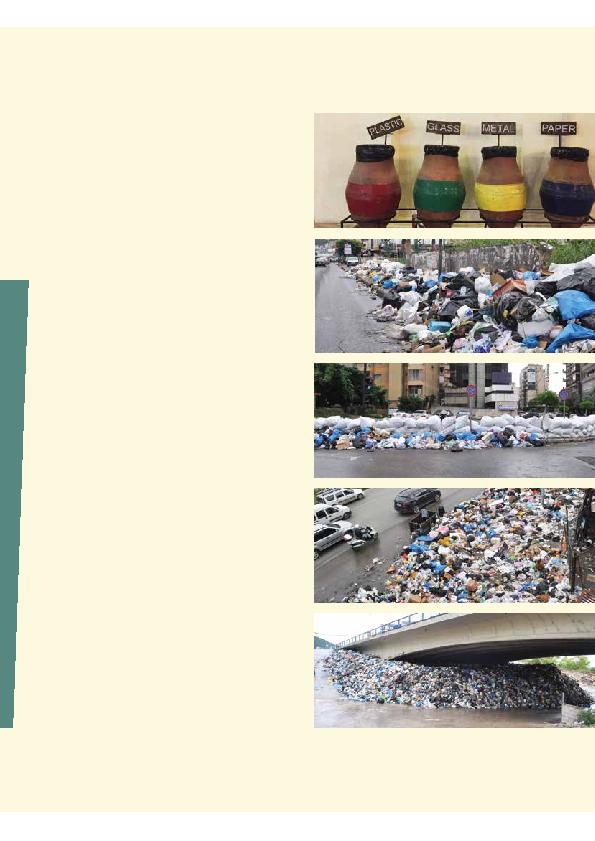
single integrated SWM solution quite challenging.
Consultants must consider demography, economics,
society, technical aspects, and the environment.
on the amount of generated waste. Both the resident
population and migrants come into play. For example,
in recent months, Lebanon has witnessed a massive
influx of refugees. This influx has increased tensions
on the basic solid waste infrastructure of vulnerable
communities and left a heavy burden on their
already-fragile environmental resources.
affects both the type and quantity of solid waste. As
spending power goes up, so too do waste quantities.
Government institutions charge the community
for SWM services. Charges are calculated through
economic/financial feasibility assessments that take
into consideration among other things service
charges, financing and cost recovery.
citizens become more willing to separate recyclables
at source when awarded with good incentives. They
may react to proposed waste treatment/disposal sites.
A SWM strategy that does not fully consider social
concerns and invite public participation has little
chance of long-term success.
have prevented health risks and environmental
degradation. The most successful ones fall under
waste avoidance: socially-responsible action to avoid
generating waste in the first place and to reduce the
need for subsequent treatment and disposal. For
example, supermarkets in the UK are required to
charge customers for each plastic bag. So, shoppers
reuse the bags at their next shopping occasions. This
very simple step is expected to help cut down around
7.6 billion bags every year!